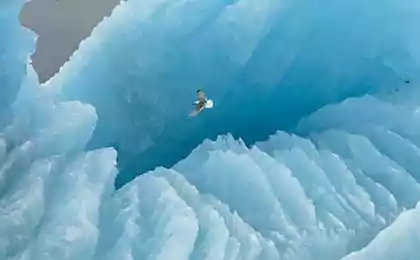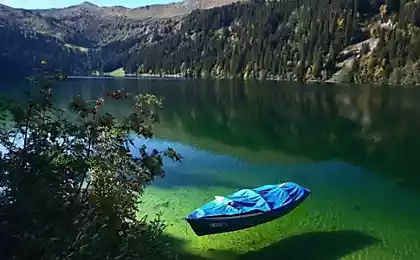1338
History of Yosemite Park
This national park is located in the districts of Mariposa and Tuolomni State of California and is known primarily for his landscapes and nature.
Not many places on earth can boast so many great attractions in a small area like it. Unfortunately, this park is now closed.
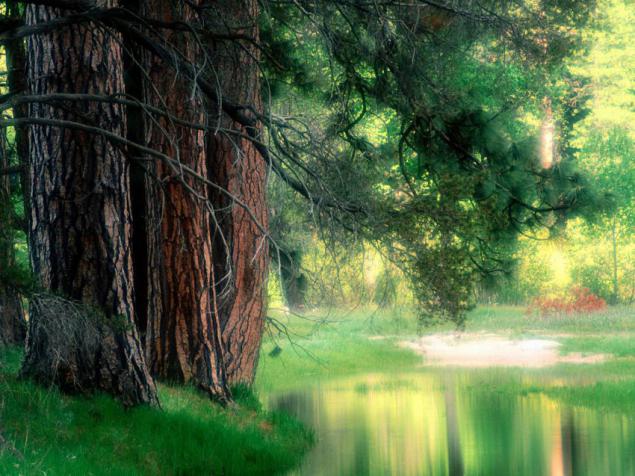
This has not been in the US since 1996. In the holiday shipped more than 800,000 of the nearly 2 million federal employees. Closed museums, all national parks and other federal agencies. In ships left funds for 10 days. The US government has partially suspended the work of state institutions, as Republicans and Democrats failed to overcome differences on the budget. 18.5 thous. Of 55.5 thousand. US Department of Transportation employees are sent on unpaid leave. The inscription "All national parks CLOSED»:

The Pentagon said it might be forced to send on vacation about 400 thousand. Civilian staff, to postpone the execution of military contracts, as well as training activities. Budget cuts affected the US Navy - ships have rarely go to sea, the pilots fly less. Out of 97% of employees of NASA: on the job there were only 6 astronauts and cosmonauts in orbit. Mars rover Curiosity on the suspension of the government remains in "protective sleep mode" and will work on the collection of information about Mars. As long as the postal service and paid pension. Medical service is not stopped, when it comes to patients of hospitals and ambulances. This is the most serious crisis of the state in the last 17 years. Created Yosemite National Park - October 1, 1890. This photo was taken before its opening in 1887.
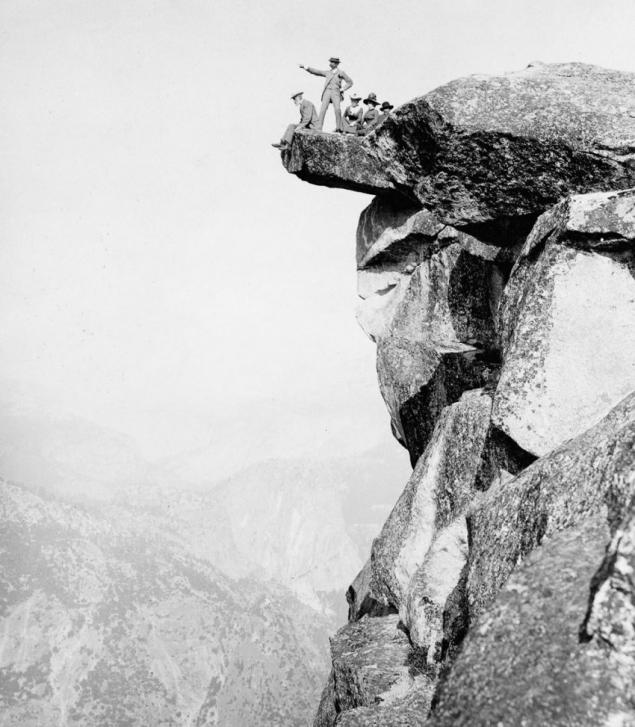
Yosemite Valley in 1865. It takes only 1% of the total territory of the modern fleet, but that's where the majority of visitors flock today.

So far, there is a debate among historians as to who was the first European to see the Yosemite Valley. In the fall of 1833, Joseph Walker Reddeford may first saw the valley - in his subsequent recordings, he said that was headed by a group of hunters who crossed the Sierra Nevada and came close to the edge of the valley, which goes down "more than a mile." Left - Theodore Roosevelt (25th US vice president, 26th president of the United States in 1901-1909) in the Yosemite Park, California, in 1903.

Part of the Sierra Nevada where the park is located, has long been considered border settlements in Europe, traders, hunters and travelers. However, this status changed in 1848 with the discovery of gold deposits at the foot of the mountains in the west. Since then, the trading activity in the area has increased dramatically as a result of triggering the California gold rush. The visitors began to destroy natural resources, due to which the Indian tribes lived. 1865 .:

As a result of a sharp increase in the flow of immigrants during the gold rush began to appear armed conflicts with local tribes. Buffalo Soldiers in what is now Yosemite, 1899.

Entrepreneur James Hachings artist Thomas Aires and two other travelers were the first tourists of the valley, came here in 1855. Hachings issued booklets and books describing his tour, and drawings Aires became the first professional pictures of local attractions. It was during the early tourism. 1902.

Several prominent people, including Senator John Konnessa, interested in the commercial success of the tourism business and came up with the idea of creating a public park on the territory of the valley. June 30, 1864, US President Abraham Lincoln signed before Congress approved a document called Yosemite Grant. Unexpected frame: the sailors in the hospital, located in Yosemite National Park. The fact that the hotel in the park was transformed into a hospital during the Second World War. Photo 1944.

Overgrazing in pastures (mainly sheep), Giant Sequoia tree cutting and other activities to the detriment of nature, forced to carry out an act of Congress, which is October 1, 1890 gave the status of a national park. Trout fishing in the Merced River, which flows through Yosemite Valley, California, August 12, 1943.

In 1916 it was formed a public service designed to take care of the park. They were built roads, lodges and campsites along the lake. With the development of traffic to the park were paved highways. In 1920 the museum was founded Yosemite. Yosemite National Park, July 24, 1944.

In the early XX century, conservationists have persuaded Congress to recognize the 2742 square kilometers, or 89% of the protected natural area of the park with the highest degree of protection. As a result, visitors were not allowed to attend a large area of the park. From ancient times, bicycles are a popular means of transportation in Yosemite National Park, July 8, 1952.

"Savages" with his trailer park, 8 July 1952.

2 210 meters above sea level. Yosemite National Park, July 8, 1952.

Queen Elizabeth II during her visit to Yosemite National Park, 5 March 1983.

Long ago, during the early Paleozoic era (beginning 541 million years ago and lasted for about 289 million years) the territory of modern park was on the continental margin.
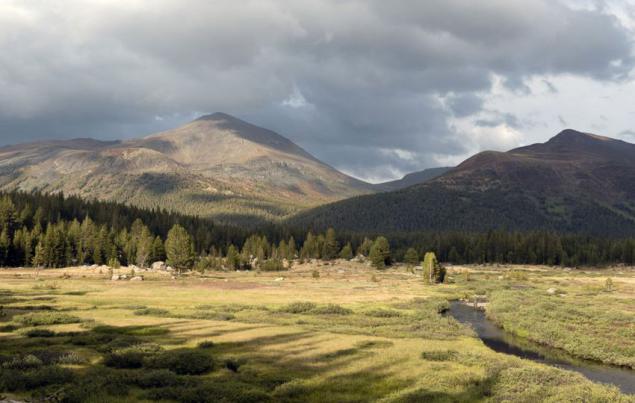
About 10 million years ago, the Sierra Nevada increased and then bent so that the western slope became less steep and east that faces toward the mainland, more steep. The rise has increased the slope of the water flow and river beds, resulting in forming a deep and narrow canyons. About a million years ago, at the tops of the accumulated snow and ice formed in the areas of modern subalpine and alpine zones glaciers, thus lowering the valleys of the rivers down the hill. The first ice age glaciers the ice thickness up to 1 200 meters. Vernal Falls - a large waterfall on the Merced River at the bottom of the waterfall Nevada in Yosemite National Park, USA. The height of the waterfall is 96.62 meters.
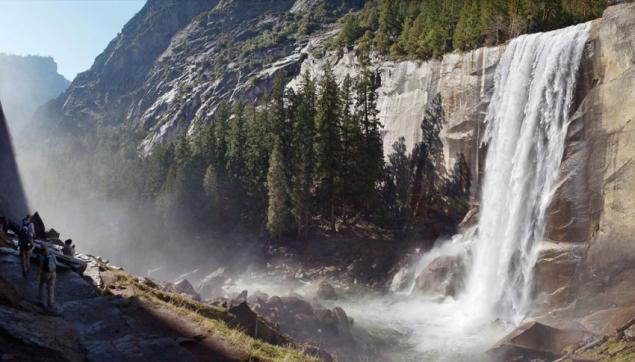
The famous waterfall "horse's tail." By itself, waterfall particularly unremarkable, but for 2 weeks in a year in February, he is transformed: the setting sun turns it into a fiery waterfall.
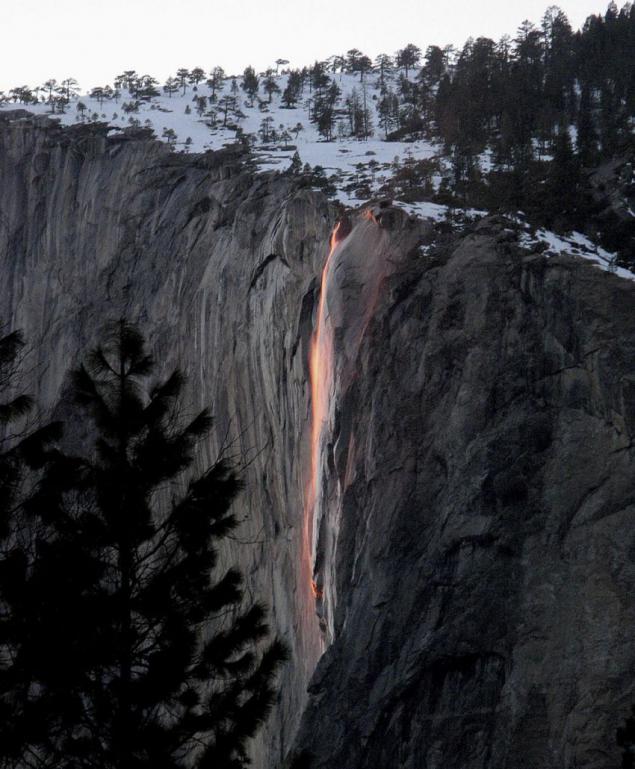
Almost the entire territory of the park is composed of granitic rocks of the Sierra Nevada Batholith. The remaining 5% of the park consists of volcanic and sedimentary rocks. As a result of the erosion of the different rock experienced tectonic uplift and related fractures that appeared valleys, canyons and other landforms that we see today.

The most powerful erosive force over the past few million years became glacier in the alpine zone, resulting in the original V-shaped river valleys have turned into U-shaped glacial canyons (such as Yosemite Valley and Hetch Hetchy-).

Sovyata. The variety of natural landscapes of the park, from the thickets of thorny shrubs and ending in the foothills of the Alpine meadows on the mountain tops, there are over 250 species of animals, which include fish, amphibians, reptiles, birds and mammals. A great biodiversity compared to other nearby regions is due to the pristine wilderness, where human activity is not conducive to their disappearance.

Each year the park is visited by about 3 million people; Most stops only in the Yosemite Valley.

Lynx in Yosemite National Park. By the way, this is the most northerly of the cat species; in Scandinavia, it is found even in the Arctic Circle.

Granite rocks Park, covers 95% of the territory.
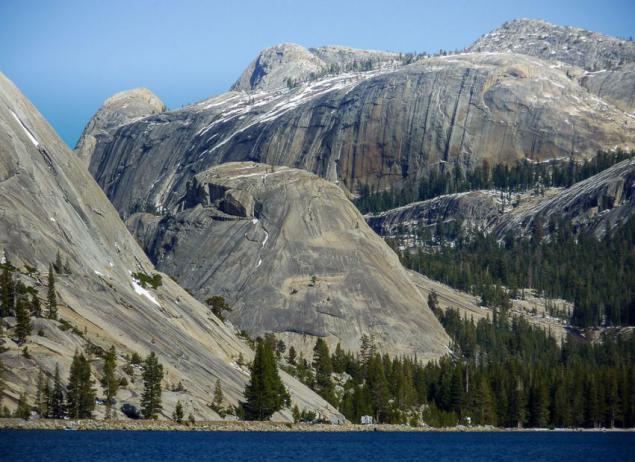
Deer.

Yosemite Valley. The park has thousands of lakes and ponds, 2,600 rivers and streams, 1,300 km of hiking trails and 560 km of roads.

Despite the rich vegetation and conservation measures taken in the recent past three species of fauna found in the park, completely extinct, and another 37 have a special status or in California or the federal list of species threatened with extinction. The most serious threat to wildlife in Yosemite are now forest fires.
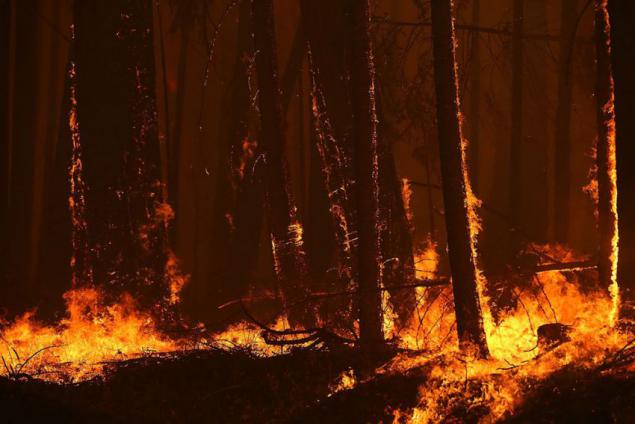
The park has a limited area is a large number of waterfalls.

At the Vernal Falls.
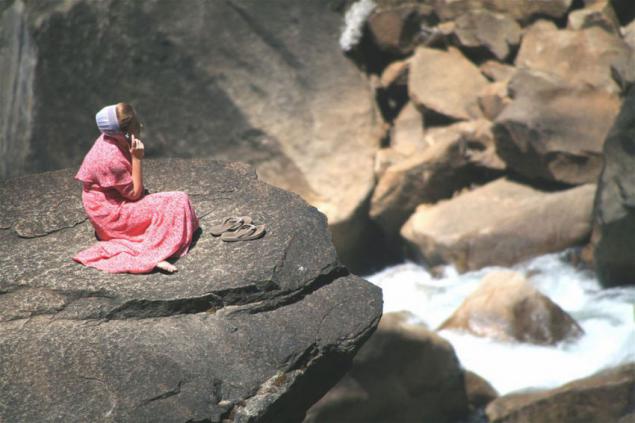
Yosemite Valley, Yosemite National Park, 2009.

Source: www.liveinternet.ru
Not many places on earth can boast so many great attractions in a small area like it. Unfortunately, this park is now closed.

This has not been in the US since 1996. In the holiday shipped more than 800,000 of the nearly 2 million federal employees. Closed museums, all national parks and other federal agencies. In ships left funds for 10 days. The US government has partially suspended the work of state institutions, as Republicans and Democrats failed to overcome differences on the budget. 18.5 thous. Of 55.5 thousand. US Department of Transportation employees are sent on unpaid leave. The inscription "All national parks CLOSED»:

The Pentagon said it might be forced to send on vacation about 400 thousand. Civilian staff, to postpone the execution of military contracts, as well as training activities. Budget cuts affected the US Navy - ships have rarely go to sea, the pilots fly less. Out of 97% of employees of NASA: on the job there were only 6 astronauts and cosmonauts in orbit. Mars rover Curiosity on the suspension of the government remains in "protective sleep mode" and will work on the collection of information about Mars. As long as the postal service and paid pension. Medical service is not stopped, when it comes to patients of hospitals and ambulances. This is the most serious crisis of the state in the last 17 years. Created Yosemite National Park - October 1, 1890. This photo was taken before its opening in 1887.

Yosemite Valley in 1865. It takes only 1% of the total territory of the modern fleet, but that's where the majority of visitors flock today.

So far, there is a debate among historians as to who was the first European to see the Yosemite Valley. In the fall of 1833, Joseph Walker Reddeford may first saw the valley - in his subsequent recordings, he said that was headed by a group of hunters who crossed the Sierra Nevada and came close to the edge of the valley, which goes down "more than a mile." Left - Theodore Roosevelt (25th US vice president, 26th president of the United States in 1901-1909) in the Yosemite Park, California, in 1903.

Part of the Sierra Nevada where the park is located, has long been considered border settlements in Europe, traders, hunters and travelers. However, this status changed in 1848 with the discovery of gold deposits at the foot of the mountains in the west. Since then, the trading activity in the area has increased dramatically as a result of triggering the California gold rush. The visitors began to destroy natural resources, due to which the Indian tribes lived. 1865 .:

As a result of a sharp increase in the flow of immigrants during the gold rush began to appear armed conflicts with local tribes. Buffalo Soldiers in what is now Yosemite, 1899.

Entrepreneur James Hachings artist Thomas Aires and two other travelers were the first tourists of the valley, came here in 1855. Hachings issued booklets and books describing his tour, and drawings Aires became the first professional pictures of local attractions. It was during the early tourism. 1902.

Several prominent people, including Senator John Konnessa, interested in the commercial success of the tourism business and came up with the idea of creating a public park on the territory of the valley. June 30, 1864, US President Abraham Lincoln signed before Congress approved a document called Yosemite Grant. Unexpected frame: the sailors in the hospital, located in Yosemite National Park. The fact that the hotel in the park was transformed into a hospital during the Second World War. Photo 1944.

Overgrazing in pastures (mainly sheep), Giant Sequoia tree cutting and other activities to the detriment of nature, forced to carry out an act of Congress, which is October 1, 1890 gave the status of a national park. Trout fishing in the Merced River, which flows through Yosemite Valley, California, August 12, 1943.

In 1916 it was formed a public service designed to take care of the park. They were built roads, lodges and campsites along the lake. With the development of traffic to the park were paved highways. In 1920 the museum was founded Yosemite. Yosemite National Park, July 24, 1944.

In the early XX century, conservationists have persuaded Congress to recognize the 2742 square kilometers, or 89% of the protected natural area of the park with the highest degree of protection. As a result, visitors were not allowed to attend a large area of the park. From ancient times, bicycles are a popular means of transportation in Yosemite National Park, July 8, 1952.

"Savages" with his trailer park, 8 July 1952.

2 210 meters above sea level. Yosemite National Park, July 8, 1952.

Queen Elizabeth II during her visit to Yosemite National Park, 5 March 1983.

Long ago, during the early Paleozoic era (beginning 541 million years ago and lasted for about 289 million years) the territory of modern park was on the continental margin.

About 10 million years ago, the Sierra Nevada increased and then bent so that the western slope became less steep and east that faces toward the mainland, more steep. The rise has increased the slope of the water flow and river beds, resulting in forming a deep and narrow canyons. About a million years ago, at the tops of the accumulated snow and ice formed in the areas of modern subalpine and alpine zones glaciers, thus lowering the valleys of the rivers down the hill. The first ice age glaciers the ice thickness up to 1 200 meters. Vernal Falls - a large waterfall on the Merced River at the bottom of the waterfall Nevada in Yosemite National Park, USA. The height of the waterfall is 96.62 meters.

The famous waterfall "horse's tail." By itself, waterfall particularly unremarkable, but for 2 weeks in a year in February, he is transformed: the setting sun turns it into a fiery waterfall.

Almost the entire territory of the park is composed of granitic rocks of the Sierra Nevada Batholith. The remaining 5% of the park consists of volcanic and sedimentary rocks. As a result of the erosion of the different rock experienced tectonic uplift and related fractures that appeared valleys, canyons and other landforms that we see today.

The most powerful erosive force over the past few million years became glacier in the alpine zone, resulting in the original V-shaped river valleys have turned into U-shaped glacial canyons (such as Yosemite Valley and Hetch Hetchy-).

Sovyata. The variety of natural landscapes of the park, from the thickets of thorny shrubs and ending in the foothills of the Alpine meadows on the mountain tops, there are over 250 species of animals, which include fish, amphibians, reptiles, birds and mammals. A great biodiversity compared to other nearby regions is due to the pristine wilderness, where human activity is not conducive to their disappearance.

Each year the park is visited by about 3 million people; Most stops only in the Yosemite Valley.

Lynx in Yosemite National Park. By the way, this is the most northerly of the cat species; in Scandinavia, it is found even in the Arctic Circle.

Granite rocks Park, covers 95% of the territory.

Deer.

Yosemite Valley. The park has thousands of lakes and ponds, 2,600 rivers and streams, 1,300 km of hiking trails and 560 km of roads.

Despite the rich vegetation and conservation measures taken in the recent past three species of fauna found in the park, completely extinct, and another 37 have a special status or in California or the federal list of species threatened with extinction. The most serious threat to wildlife in Yosemite are now forest fires.

The park has a limited area is a large number of waterfalls.

At the Vernal Falls.

Yosemite Valley, Yosemite National Park, 2009.

Source: www.liveinternet.ru



